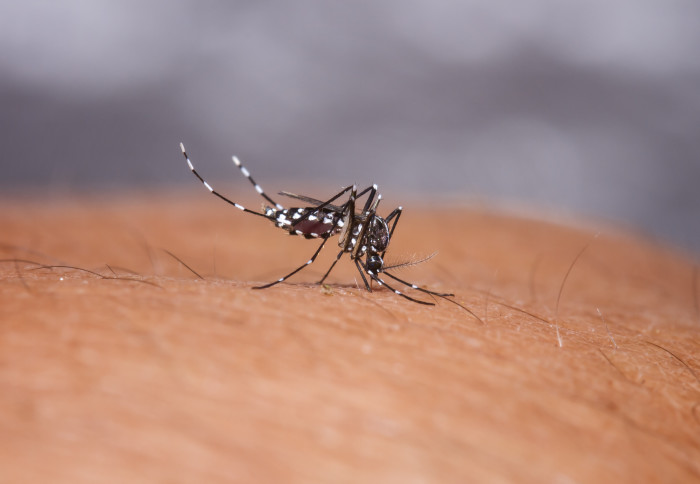More deaths from yellow fever expected in Africa because of climate change

Changing temperature and rainfall across Africa could increase yellow fever deaths by up to 25 percent by 2050.
This is according to new modelling of the burden of yellow fever by scientists at Imperial College London and the World Health Organisation (WHO). It suggests that some East African countries including Ethiopia and Somalia may be increasingly impacted by yellow fever in the coming decades and that future vaccine programmes will need to counteract this.
Our work shows that the burden of yellow fever in Africa is likely to increase even under the most optimistic climate change scenario. Dr Katy Gaythorpe
Yellow fever is a viral infection causing 78,000 deaths per year in Africa. Despite an existing yellow fever vaccine, the disease is endemic in 34 countries in Sub-Saharan Africa, with serious outbreaks occurring in recent years.
The virus can be transmitted by several mosquito species, or vectors, but the main vector in serious urban outbreaks is the mosquito species Aedes aegypti. To model the impact of climate change on yellow fever, the team built on an existing transmission model to include the sensitivity of A. aegypti and the virus to temperature and rainfall.
Warmer temperatures can help the mosquitos emerge and mature faster leading to more mosquitos; however, too high a temperature can be fatal. Rainfall can also increase mosquito breeding by providing stagnant ponds for them to lay eggs in.
Increased burden
The team modelled changes in temperature and rainfall across African countries under four climate change scenarios, with the ‘best case’ involving carbon emissions peaking by the 2030s and decreasing thereafter, and the ‘worst case’ involving carbon emissions steadily increasing throughout the century.
By 2050, the modelling showed that deaths could increase by around 11 percent for the best-case scenario and up to 25 percent for the worst-case scenario. By 2070, these figures were projected to be 10 percent and 40 percent respectively. The results of the modelling are published today in the journal eLife.
Lead author of the study Dr Katy Gaythorpe, research lead for the Vaccine Impact Modelling Consortium from the School of Public Health at Imperial, said: “The influence of climate change on yellow fever transmission had not previously been explored, but we have found it to be fundamental. Our work shows that the burden of yellow fever in Africa is likely to increase even under the most optimistic climate change scenario.”
The team found that the increases were not the same across Africa, with the most significant increases in East and Central African countries including Ethiopia and Somalia. West African countries currently have the highest yellow fever disease burden on the continent, so although the study found there would be smaller proportional changes in the amount of yellow fever transmission, this would translate to large numbers of new deaths.
Dr Gaythorpe added: “We could see yellow fever expanding into new areas and worsening in regions where it is already causing major outbreaks. To prevent this resulting in thousands more deaths, a programme of surveillance and appropriate mosquito control and vaccination will need to be sustained."
Geographic shift
Co-author Dr Arran Hamlet from the School of Public Health at Imperial said: “Despite the availability of an effective and safe yellow fever vaccine for the last 70 years, the complexity of disease transmission and the environments in which it is found have meant that it is a disease yet to be conquered. Our study suggests that this problem is only going to worsen under climate change, which may serve to see the burden of yellow fever shift geographically.”
Additionally, the team say that while West Africa has benefited from substantial vaccination campaigns in recent years, East African countries have not had such extensive vaccination.
Dr Hamlet added: “Hard fought and won reductions in the burden of yellow fever across Africa have been primarily focused on West Africa, but if these gains are to be maintained then they will have to adapt to a changing epidemiology of yellow fever, driven in part by climate change.”
-
‘The effect of climate change on Yellow Fever disease burden in Africa’ by Dr Katy Gaythorpe et al. is published in eLife.
This work was carried out as part of the Vaccine Impact Modelling Consortium (www.vaccineimpact.org), which is funded by Gavi, the Vaccine Alliance and a grant from the Bill & Melinda Gates Foundation. The views expressed are those of the authors and not necessarily those of the Consortium or its funders. The final decision on the content of the publication was taken by the authors. We acknowledge joint Centre funding from the UK Medical Research Council and Department for International Development. The funders had no role in study design, data collection and interpretation, or the decision to submit the work for publication.
Article supporters
Article text (excluding photos or graphics) © Imperial College London.
Photos and graphics subject to third party copyright used with permission or © Imperial College London.
Reporter
Hayley Dunning
Communications Division